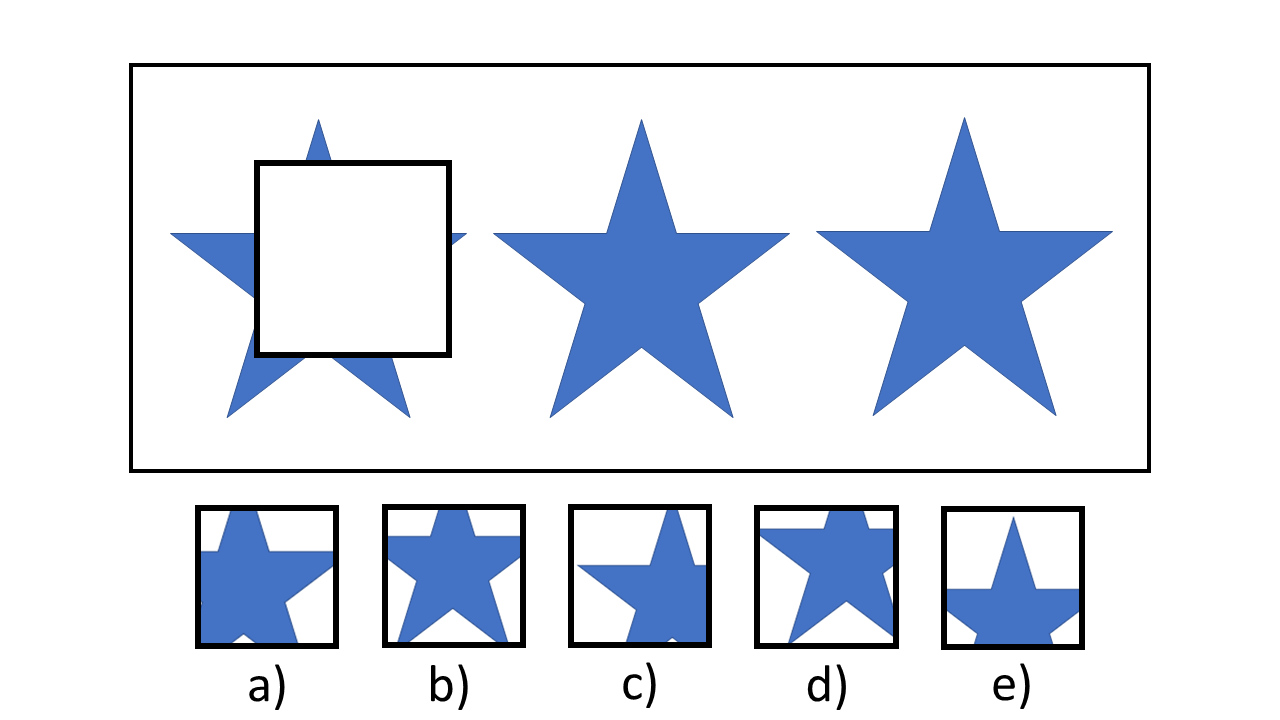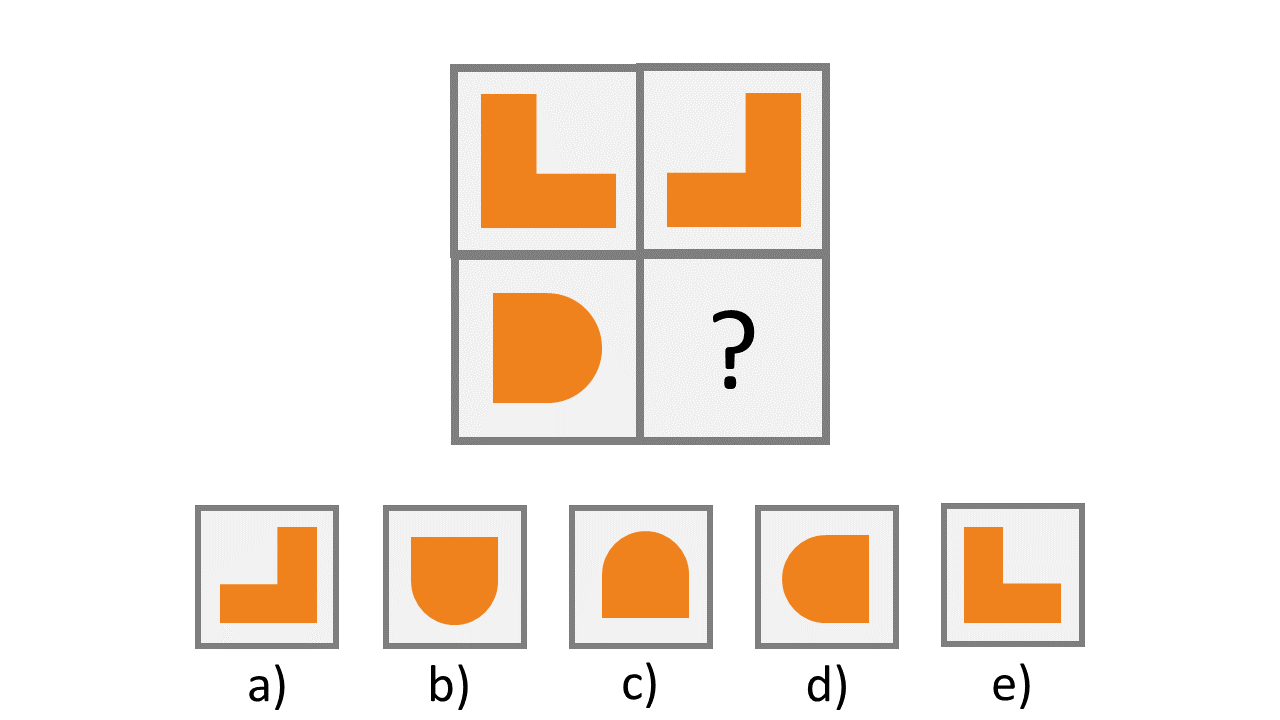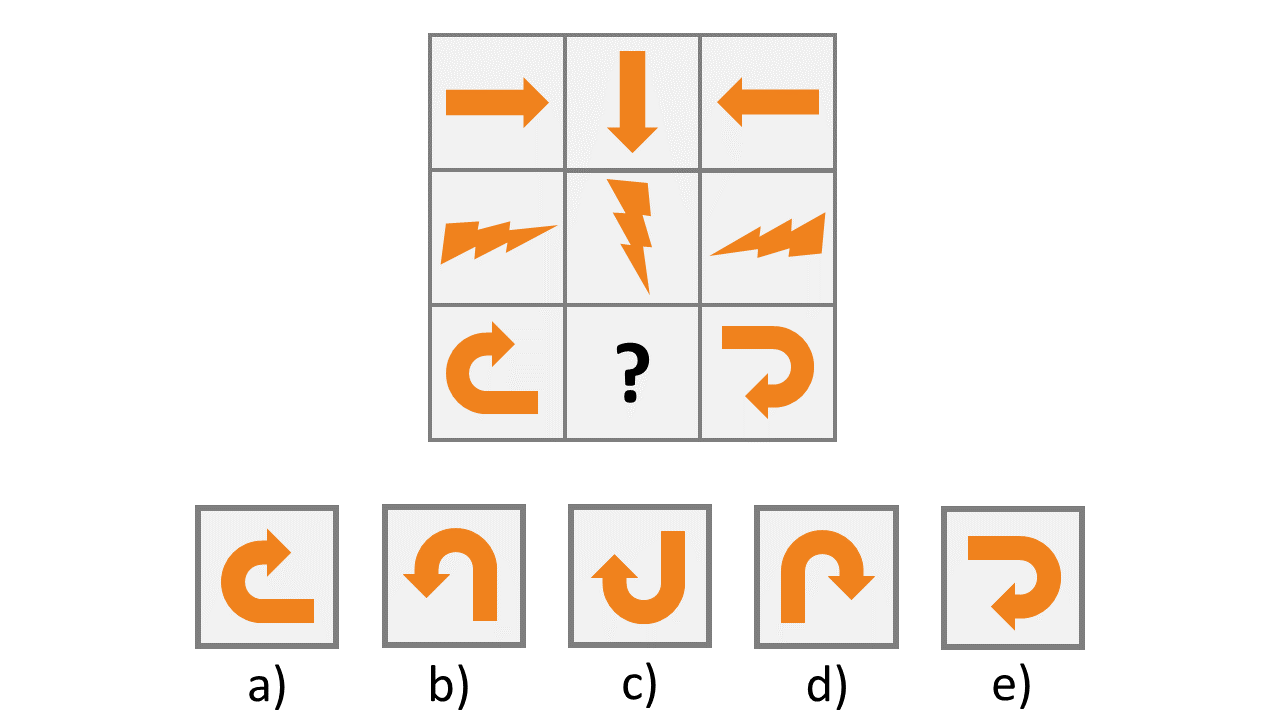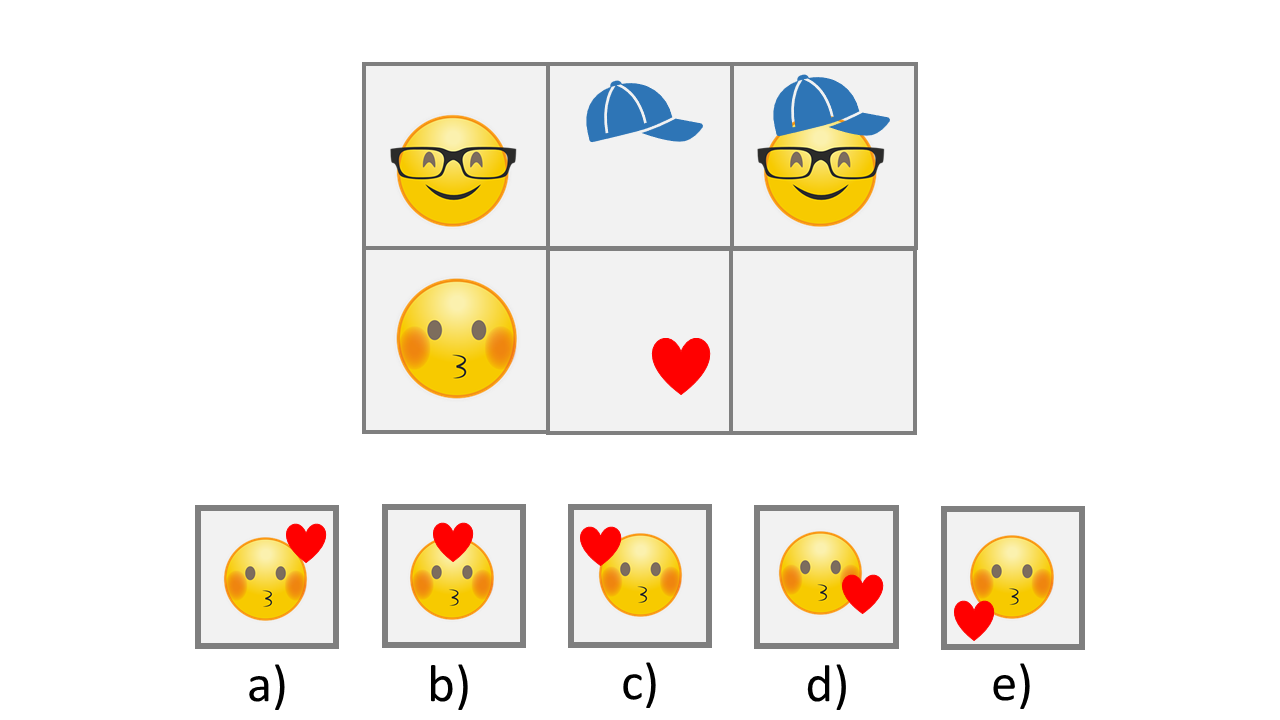How to Pass the NNAT Test in 2026
Updated January 29, 2024
- A List of NNAT Tests available for Practice in 2025
- What Is the NNAT Test?
- Differences Between the NNAT-2 and NNAT3 Test
empty
empty
empty
empty
empty
- NNAT Test Quick Facts
empty
empty
empty
empty
empty
empty
empty
empty
empty
empty
- The NNAT Test Levels in Detail
empty
empty
empty
empty
- What Does the NNAT Cover?
- What Is the Purpose of the NNAT Test?
- How Is the NNAT Taken?
- What Types of Questions Are on the NNAT?
empty
empty
empty
empty
- How Is the NNAT Test Scored?
empty
empty
empty
empty
- How to Pass and Ace an NNAT Test: Top Tips for 2026
- How to Prepare for NNAT Test
empty
empty
empty
empty
empty
empty
empty
empty
- Frequently Asked Questions
- Final Thoughts
A List of NNAT Tests available for Practice in 2025
- NNAT Kindergarten (Level A)
- NNAT 1st Grade (Level B)
- NNAT 2nd Grade (Level C)
- NNAT 3rd to 4th Grades (Level D)
What Is the NNAT Test?
The Naglieri Nonverbal Ability Test, commonly known as the NNAT, is an assessment published by Pearson Education that is often used to identify gifted and talented children.
It is primarily encountered during the entrance process for schools and talent programs.
The NNAT tests the problem-solving and abstract reasoning ability of K-12 students (aged between 5 and 17). There are seven different levels of NNAT, ranging from A to G (from kindergarten to school grades 10–12).
It is a standardized test, which allows for objective talent measurement, but the test your child sits will be tailored to their age group.
Not all levels of the test cover the same content, for example, spatial visualization isn’t included until children reach Grade 2.
The most recent version of the test is the NNAT 3, which has 48 questions and a time limit of 30 minutes.
A high score on the NNAT can evidence your child’s talent and ensure they are placed within a supportive learning environment that nurtures and encourages their skill.
Differences Between the NNAT-2 and NNAT3 Test
The NNAT-2 (Naglieri Nonverbal Ability Test, Second Edition) and NNAT3 (Naglieri Nonverbal Ability Test, Third Edition) are cognitive assessment tools commonly used to measure nonverbal reasoning skills in children.
While both tests share similarities, there are some notable differences between them.
Here are some key distinctions:
Test Structure
The NNAT-2 consists of four types of questions: pattern completion, reasoning by analogy, serial reasoning and spatial visualization.
On the other hand, the NNAT3 features five question types: pattern completion, reasoning by analogy, serial reasoning, spatial visualization and pattern matrices.
The addition of pattern matrices in NNAT3 allows for a broader assessment of a child's nonverbal reasoning abilities.
Age Range
The age range for the NNAT-2 is typically from ages 3 to 18, while the NNAT3 is designed for children between the ages of 5 and 17.
The NNAT3 extends the lower age limit by two years compared to NNAT-2, providing a more targeted assessment for early elementary school students.
Item Content
The specific item content and visuals used in the NNAT-2 and NNAT3 tests differ.
While both tests evaluate nonverbal reasoning, the specific stimuli and visual formats may vary, ensuring that the content remains fresh and engaging for test-takers.
Normative Data
Normative data refers to the performance standards based on the scores of a representative sample of individuals.
The NNAT-2 and NNAT3 have separate normative data sets, which are used to compare an individual's performance with that of their peers.
The norms for the NNAT3 are more recent, reflecting the performance of a more recent population of test-takers.
Scoring and Interpretation
The scoring and interpretation procedures for the NNAT-2 and NNAT3 may differ due to variations in the item content and normative data.
Test publishers provide specific scoring guidelines and interpretive reports for each edition to help educators and professionals understand the results accurately.
NNAT Test Quick Facts
Purpose
The NNAT is a nonverbal cognitive ability test designed to measure a student's nonverbal reasoning and problem-solving skills.
Nonverbal Assessment
The test is entirely nonverbal, meaning it does not rely on verbal or language-based skills.
Instead, it uses visual and abstract stimuli to assess a student's abilities.
Age Range
The NNAT is typically administered to students between the ages of 5 and 17.
However, there are different versions available for specific age groups, such as the NNAT-2 for ages 3 to 18 and the NNAT3 for ages 5 to 17.
Test Sections
The NNAT consists of various question types that assess different aspects of nonverbal reasoning, such as pattern completion, reasoning by analogy, serial reasoning, spatial visualization and pattern matrices (in the NNAT3).
Time Limit
The test is timed, with specific time constraints for each section or subset of questions.
The time limits vary based on the student's age and the version of the test being administered.
Individual or Group Administration
The NNAT can be administered individually or in a group setting, depending on the context and available resources.
Use in Gifted and Talented Programs
The NNAT is often used as part of the assessment process for identifying gifted and talented students who may excel in areas not typically measured by traditional academic tests.
Standardized Scoring
The NNAT provides standardized scores that allow for comparison of a student's performance to a normative sample of the same age or grade level.
The scores are typically reported as percentile ranks or scaled scores.
Test Publisher
The NNAT was developed by Dr. Jack Naglieri and is published by NCS Pearson, Inc.
Other editions and adaptations may also exist, such as the NNAT-3, NNAT2 and NNAT Level D.
Interpretation
The results of the NNAT should be interpreted by qualified professionals who are familiar with the test's administration and scoring guidelines.
Interpretation often involves considering other factors, such as a student's academic performance and additional assessments, to gain a comprehensive understanding of their abilities.
The NNAT Test Levels in Detail
NNAT Kindergarten (Level A)
- 48 questions
- Pattern completion and reasoning by analogy questions.
Practice NNAT Kindergarten (Level A)
NNAT 1st Grade (Level B)
- 48 questions
- Pattern completion, reasoning by analogy and serial reasoning questions
Practice NNAT 1st Grade (Level B)
NNAT 2nd Grade (Level C)
- 48 questions
- Pattern completion, reasoning by analogy, serial reasoning and spatial visualization questions
Practice NNAT 2nd Grade (Level C)
NNAT 3rd to 4th Grades (Level D)
- 48 questions
- Pattern completion, reasoning by analogy, serial reasoning and spatial visualization questions
Practice NNAT 3rd to 4th Grades (Level D)
What Does the NNAT Cover?
The NNAT is a purely non-verbal test, which means it does not feature any questions relating to language, vocabulary or grammar (including tenses).
The NNAT test focuses solely on spatial problem-solving. It is considered a fair and unbiased way of testing children for cognitive ability.
Scores are not impacted by a child’s first language, cultural background, educational history or any difficulties with speech, communication or reading.
To assist children with vision impairments, the shapes in the test are as clear as possible and only use the colors black, white, yellow and blue.
The NNAT is considered one of the most suitable tests for cross-cultural assessment, allowing for the identification of talent regardless of language-development skills.
What Is the Purpose of the NNAT Test?
The NNAT is widely used to assess children’s cognitive capacities with as little interference from culture-specific factors as possible.
There are several reasons why your child may take the NNAT test.
The assessment is used to:
- Fairly test the aptitude of children who speak English as a second language.
- Measure cognitive ability in children who have a learning disability specifically related to reading or speaking, or who suffer from speech delays.
- Project the grades of children in their early days of schooling, before they have undertaken other forms of assessment.
- Determine which children should be accepted into gifted and talented programs.
- Assess whether a child reaches the criteria to be accepted into a particular school.
- Privately test a child’s problem-solving and spatial aptitude.
For the latter use, the NNAT test results may be practically used to demonstrate a child’s ability.
For example, to counter a school’s grade projection or assessment or to advocate for the child to be moved to a different teaching set.
If your child is taking the NNAT – for any of the reasons above – Test Prep’s NNAT preparation program will allow them to become familiar with the test format and increase their chances of success.
Test Prep offers a family membership plan, which can be a good option for families with more than one child, as it provides a 12-month membership to all NNAT tests.
Practice NNAT Test with Test Prep Online
How Is the NNAT Taken?
The NNAT is administered in a group format.
Depending on the circumstances, this may be in person or online.
The test contains minimal language, including few written directions. It instead relies upon examples using illustrative shapes and patterns to explain what the questions in each section are asking.
During the test, a facilitator will guide your child through the questions, making the instructions clear and giving prompts.
What Types of Questions Are on the NNAT?
The questions on the NNAT are split into four sections:
- Pattern completion
- Reasoning by analogy
- Serial reasoning
- Spatial visualization
To achieve a high score on the test, your child will need to be familiar with the different question styles.
Pattern Completion
Pattern completion questions ask your child to identify the missing piece of a pattern. A pattern in a rectangle will be presented. A section of the pattern will be obscured by a white box with a question mark.
Identify which design – out of the five options given – completes the pattern.

If you want 12-month access to all the practice resources for this test, our partner TestPrep-Online.com offers a Family Membership.
Family Membership gives you access to all the TestPrep-Online resources for the next 12 months. You will also get two separate accounts, which can be very helpful if you have two children preparing for their tests.
Get a Family Membership with 12-month access
Reasoning by Analogy
These types of questions explore the relationships between shapes. Your child will encounter four boxes that contain shapes and/or symbols (at higher levels the matrix will feature six boxes). The last box will contain only a question mark.
The task is to determine how the shapes are changing from box to box. This may be in terms of positioning (transformation or rotation), shading or color. Shapes may change across both rows and columns.
Select the answer option that completes the matrix.

Serial Reasoning
Serial reasoning questions also explore your child’s ability to identify the relationships between objects across rows and columns. A matrix with nine boxes will be presented, the last box featuring only a question mark.
Your child will need to look at the shape(s) presented in the other boxes and deduce the rule(s) that are governing them. Using these, they must choose which answer option belongs in the final box.
Which shape completes the pattern?

Spatial Visualization
These questions, once again, involve shapes organized into rows and columns. Your child will be presented with six boxes, containing shapes in combination. These shapes may transform, rotate or invert across the row.
The task is to identify what is happening to the shapes in the top row, and then use this sequence of rules to determine which answer option correctly completes the row below.
Which answer option completes the second row?

Whether your child is sitting the NNAT 3 or the earlier NNAT or NNAT 2, the question types involved are the same. The only differences are the number of questions – the initial NNAT contains 38 problems – and the colors used.

How Is the NNAT Test Scored?
You will receive three scores for your child’s NNAT – a raw score, Naglieri Ability Index (NAI) score and a percentile rank.
Raw Score
As the NNAT 3 test has 48 questions, your child’s raw score will be out of 48. If your child answered 33 questions correctly, their raw score would be 33/48.
Naglieri Ability Index (NAI)
The NAI index is calculated from your child’s raw score. It is a standardized, comparative score that compares your child’s result within a very narrow age band (comparisons are made nationally with students born within the same three-month window).
The highest possible NAI score is 160, with the average score being around 100. A normal score range starts at around 85, and a high score would be anything over 130.
Percentile Rank
Your child’s percentile rank score also indicates how your child performed against students born within a three-month age range. A percentile rank score of 70 indicates that your child’s score was higher than 70% of students tested in their age range.
School districts often use percentile scores to compare performance and determine admission outcomes.
There is no official pass score for the NNAT, as different school districts and organizations set their own standards for giftedness.
Is It Possible to Fail the NNAT Test?
Whilst there is no official standard that delineates a pass or fail on the NNAT, it is possible to secure a result that falls short of the standard set by the administrator of the test.
Some schools may test students every school year, others at designated intervals that correspond to talent programs or opportunities for gifted students.
There are usually no repeats on these assessments, so practicing using NNAT sample tests is prudent.
How to Pass and Ace an NNAT Test: Top Tips for 2026
The NNAT test could have a bearing on the type of educational environment your child is taught in.
Whilst it is important not to put too much pressure on the outcome of the test, these simple tips will help you prepare your child for the test in a comprehensive yet fun, engaging way.
Step 1. Prepare Your Child for Their Specific Test Level
The NNAT exam is used across a wide age range (from kindergarten to Grade 12), so the content and difficulty of the test vary accordingly. Research which elements will be involved in the test for your child’s age group and prepare specifically for each of these aspects.
If your child knows exactly what to expect from their test, they’ll feel less daunted on the day of the assessment and perform better. It is important to boost confidence and avoid any pressure around the outcome of the test.
Step 2. Use Practice NNAT Tests
The best way to prepare for an upcoming NNAT test is to sit practice tests that will familiarize your child with the format, content and style of the NNAT exam. Test Prep has online guides and practice questions for all NNAT levels.
These sample tests can be accessed via an individual or family membership which provides 12 months of membership across three accounts, so your children can be ready to succeed in all of their tests.
Step 3. Get Siblings or Cousins Involved in the Preparation
To make practicing for the test more fun, get your child’s siblings or cousins involved and turn preparation into a game. Children have inventive ways of learning, and other children can teach concepts in accessible ways that may not occur to adults.
Instead of it always being you who works with your child to prepare for the exam, get other voices and novel approaches involved.
Step 4. Practice Pattern Sequencing Tasks
The pattern completion and reasoning by analogy sections appear on the NNAT test for all age groups. Both the serial reasoning (included for Grade 1 and above) and spatial visualization sections (Grade 2 and above) involve similar tasks – shapes and symbols arranged in boxes and presented in columns and rows.
Familiarize your child with patterns and sequences, getting them to explain the transitions occurring and differences they can see as the sequences progress.
Step 5. Supplement Practice Tests with Other Puzzles
Preparation doesn’t need to consist of only practice tests. Accompany this important aspect of preparation with some lighter tasks. Practice simple reasoning games, riddles and puzzles to capture your child’s attention and make problem-solving with shapes fun.
You could try folding some origami, completing jigsaw puzzles or playing some reasoning-based online games.
Step 6. Encourage Spatial Play
As the test is non-verbal and focuses solely upon abstract and spatial problem-solving, practical play can help hone the required skills.
Encourage your child to play with blocks or mechanical toys to improve spatial reasoning. Get them used to encountering and identifying different shapes, and to noticing how components fit together.
Step 7. Practice Holding Attention
The NNAT has a duration of 30 minutes, which is a long time for a young child to sit and concentrate on a test paper.
In preparation, accustom your child to sitting still for 30 minutes at a time and focusing upon a task. It doesn’t matter whether they’re coloring, painting or playing with soft toys or building blocks; what’s important is the fixed attention.
Start with short sessions, and increase the length of time in achievable increments as and when you can.
Practice NNAT Test with Test Prep Online
How to Prepare for NNAT Test
Preparing for the NNAT (Naglieri Nonverbal Ability Test) can help familiarize you with the test format and improve your child's nonverbal reasoning skills.
Here are some tips on how to prepare for the NNAT:
Understand the Test Format
Familiarize yourself and your child with the structure and question types of the NNAT.
Review sample questions and become comfortable with the visual stimuli used in the test.
This will help you understand the types of patterns and reasoning you may encounter.
Practice with Sample Questions
Seek out NNAT sample questions and practice materials available online or in test preparation books.
Solving these questions will help them become familiar with the types of problems presented in the test and develop strategies to solve them efficiently.
Develop Nonverbal Reasoning Skills
Since the NNAT is a test of nonverbal reasoning, it's essential to develop and improve your nonverbal cognitive abilities.
Engage in activities that enhance your child's visual-spatial skills, pattern recognition, analogical reasoning and spatial visualization.
These skills can be improved through puzzles, brain teasers, visual pattern exercises and activities that involve manipulating and visualizing objects.
Time Management
The NNAT is a timed test, so practicing time management is crucial. As you solve sample questions, keep track of your child's timing and aim to complete each question within the allocated time.
This will help them develop a sense of pacing and ensure that they can answer as many questions as possible within the time limit.
Analyze Your Mistakes
After practicing with sample questions, review your child's answers and analyze any mistakes made.
Understand the reasoning behind the correct answers and identify any patterns or strategies they may have missed.
This analysis will help you improve your child's approach and avoid similar mistakes in the actual test.
Get Adequate Rest
Prior to the test day, ensure you get sufficient sleep and rest.
Being well-rested will help them stay focused and perform at your best during the test.
Familiarize Your Child with Test Conditions
If possible, try to create a testing environment similar to the actual test conditions.
Minimize distractions, sit at a desk or table, and time yourself while practicing sample questions.
This will help your child adapt to the test conditions and reduce any test-related anxiety.
Seek Additional Resources
Consider utilizing test preparation resources such as books, online courses, or tutoring services specifically designed for the NNAT.
These resources can provide targeted guidance and additional practice opportunities.
A high average score on the NNAT test can range between 112 to 120. If you achieve anywhere within this range, you will put yourself in the 76th to 89th percentile.
If you score between 121 to 133 then you will be considered superior, and if you score 134 or more, then you will be in the top 2% of scores.
The NNAT is not the longest examination and pupils will only need thirty minutes to complete the test. It is done under timed conditions in a school environment, but because of how short it is, it can be done at home or in any quiet environment.
The NNAT test is not an IQ test because it does not include a verbal assessment section. It is a non-verbal examination that tests what a child has learned in their school.
Although it is not an IQ test, it still examines a child’s cognitive ability.
Another interesting element of the NNAT test is that it does not require the pupil to have a primary spoken or written language.
Students are tested by questions that involve shapes and figures. These are elements that they will have learned in a school environment.
Final Thoughts
The NNAT is considered one of the fairest cognitive ability tests. It will give your child the chance to display their talent through non-verbal skills, avoiding any of the disadvantages embedded within other verbal ability tests. Children from all demographics have been found to score equally well.
Despite the unbiased nature of the test, preparation is key as encountering an unfamiliar format or experiencing excessive nervousness will have a negative impact on the test result. With some targeted (and fun!) practice, you can help your child to perform at their best.
A strong NNAT score evidences your child’s ability and may grant inclusion into a school’s program for gifted and talented children. Opportunities such as this are central to educational development.
Preparing diligently for the test will ensure that your child – whatever their age – can accurately reflect their ability so they receive the right level of support within their learning environment.
Remember, though, that no single test can give a full or accurate picture of a child’s ability. Children all have different strengths and talents which should be embraced and celebrated, and not reduced to a simple test score.




